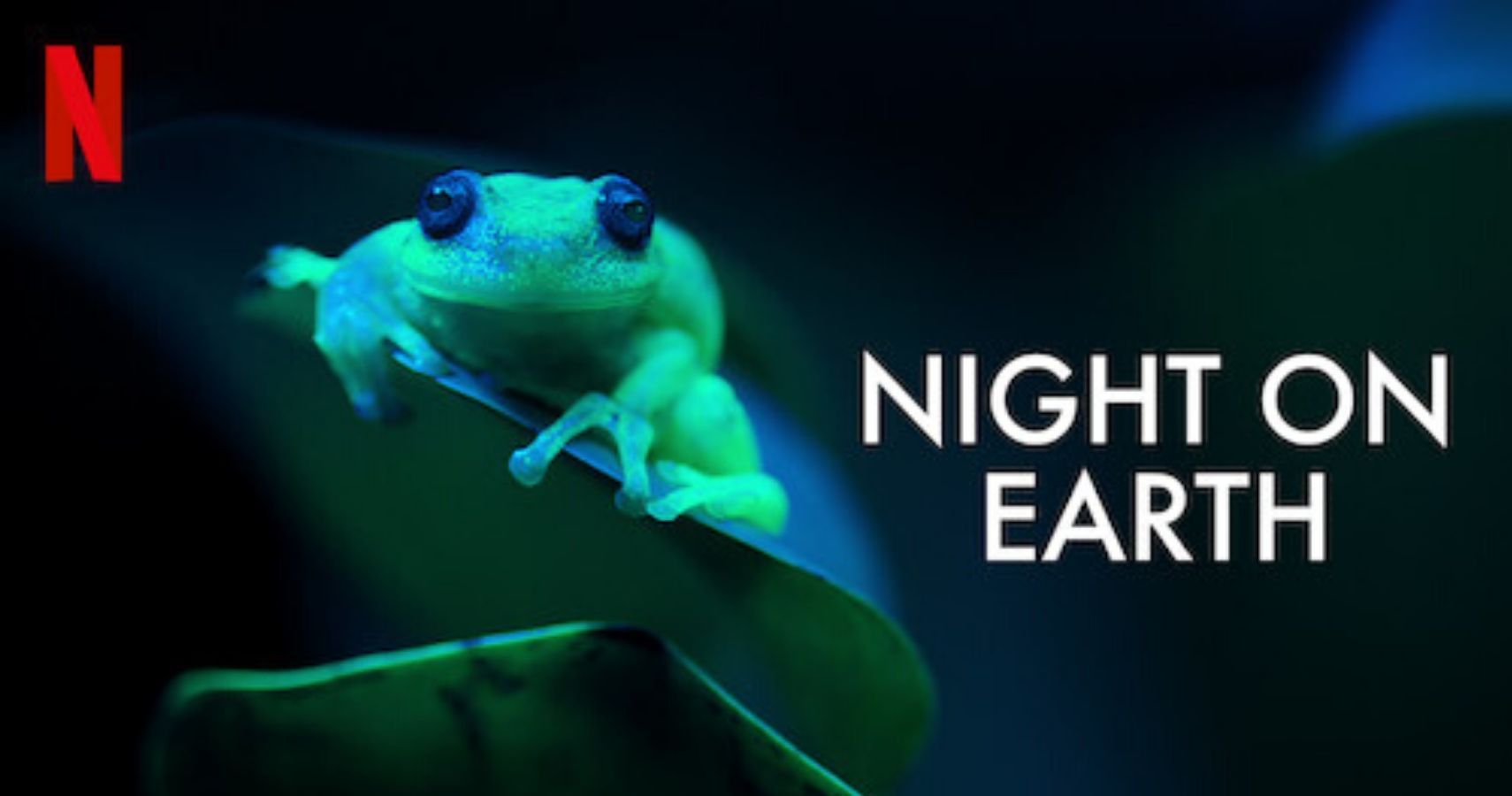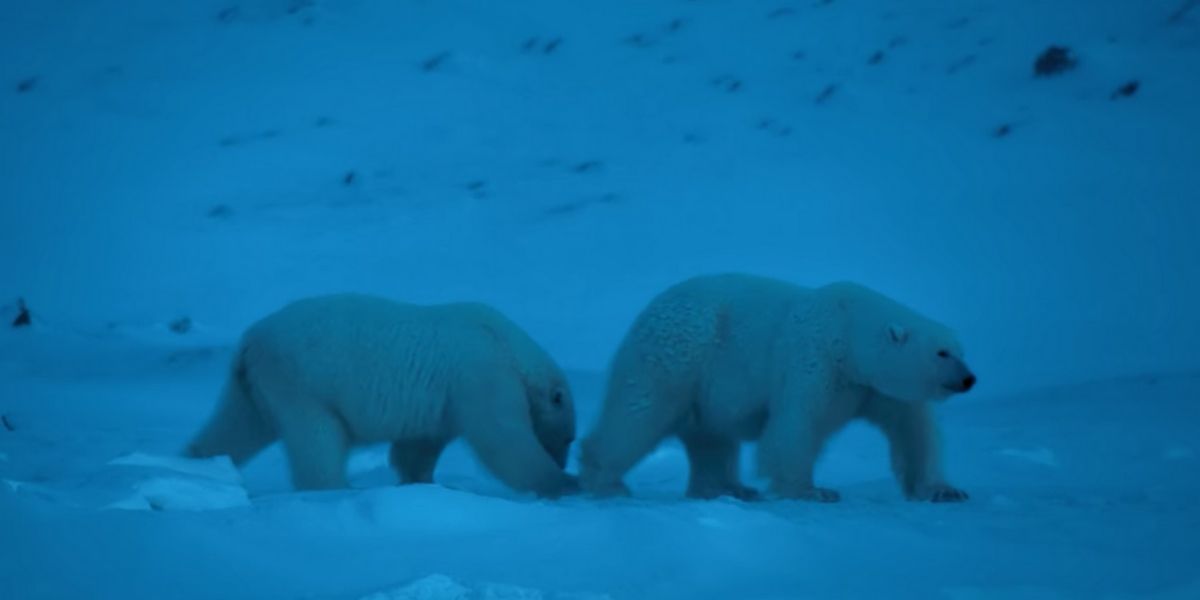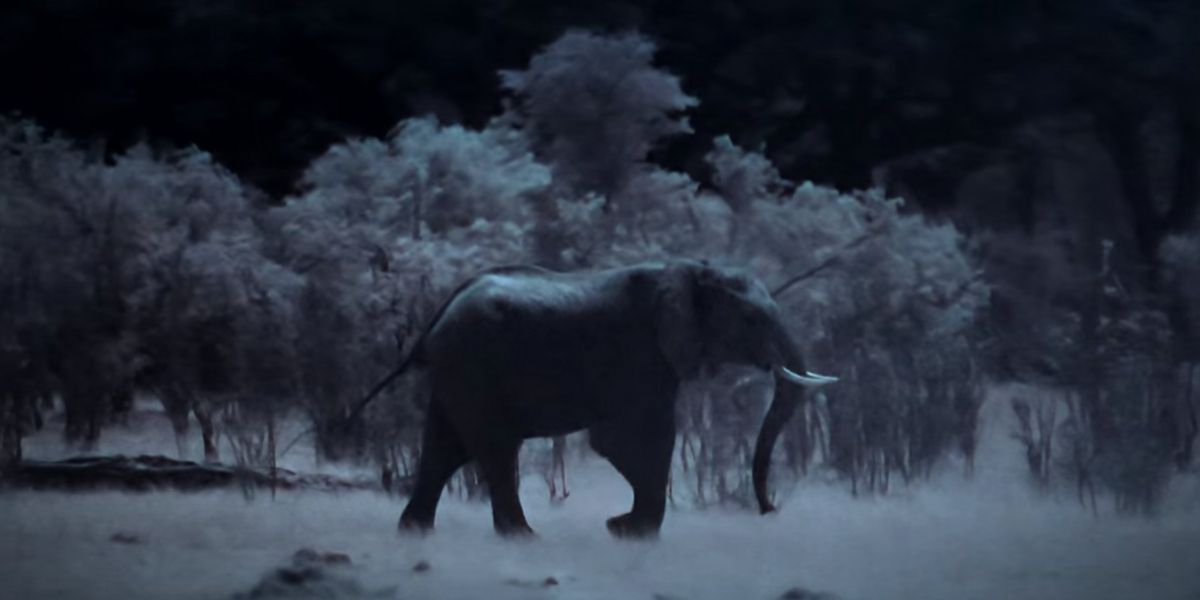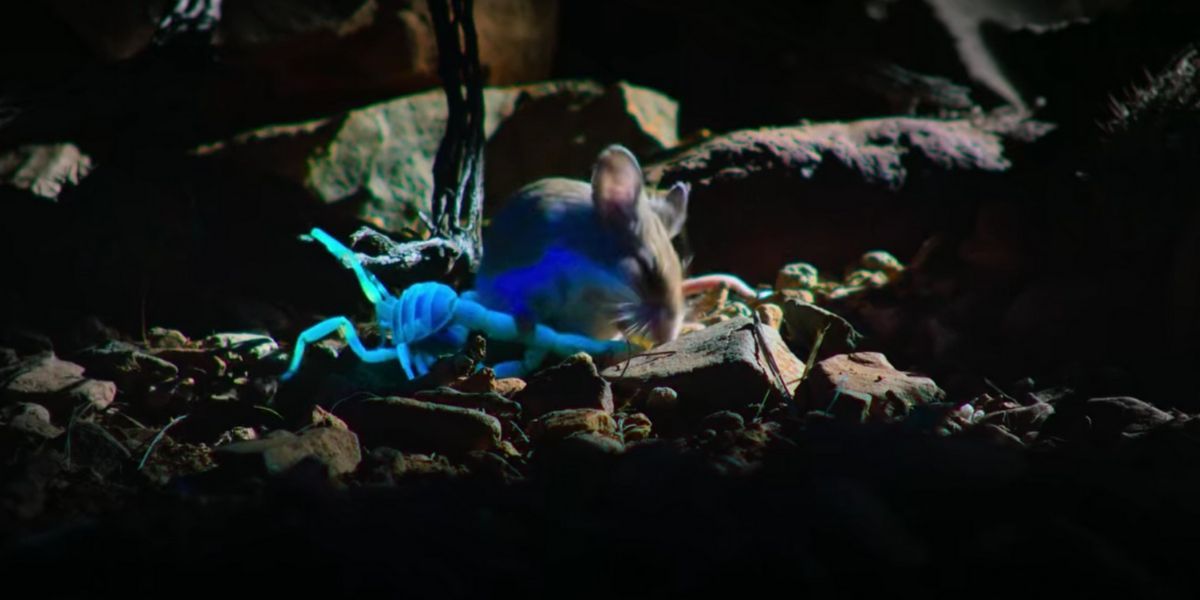Night on Earth is a nature documentary series released on Netflix in late January. Produced by Plimsoll Productions, the docuseries is narrated by Orange is the New Black actress Samira Wiley and takes us across the globe for some incredible footage of what happens to animals when the sun goes down. Using incredible low-light cameras, the docuseries shows never-seen-before moments from nature. And with six episodes to watch, each is more eye-popping than the next.
There's a lot to process about our world and how mammals, fish, and insects navigate through the night, but this documentary helps answer some life-long questions. With that said, there were also some eye-opening moments that were quite jarring.
GOLDEN MOLES ARE COMPLETELY BLIND
In the episode "Moonlit Planes," we're introduced to animals who thrive in the darkness of the desert. We saw incredible cactus flowers luring bats in with their sweet nectar but we also saw one of the most unusual rodents that can only be found in South Africa.
While they look soft and sweet from the back, they're actually totally blind with their eyes covered by a flap of fuzzy skin. To assist them on their hunt for food and safety, they have bones in their ears that help them with vibrations. Those bones also help them hide from one of their biggest predators: owls. Seeing one of these moles was like something out of a scary movie.
LEOPARDS IN CROWDED CITIES MAY EAT YOUR DOG FOR DINNER
The episode "Sleepless Cities" was one of the more fascinating because it relates to us humans the most. The entire episode shows how animals from all walks of life learn to adapt in an atmosphere that's taken over by a glowing city. By nightfall, when humans are usually sleeping, the documentary showed everything from elephants to bears to leopards coming into the cities for easy food.
In Mumbai, there are so many domestic animals roaming the city streets that a leopard has its pick of tasty options. Unfortunately, we saw one enter a building to claim a dog for its meal, proving that more than 1,000 dogs are killed every year by leopards in Mumbai.
THE SUN DOESN'T RISE FOR MONTHS IN SVALBARD
Below the equator where the sun doesn't pop up for months, we saw how a family of polar bears learned to thrive in the cold. Polar bears are perfectly equipped for the weather but the real problem is finding food and protecting each other from other predators.
We saw this in "Frozen Nights" and learned that temperatures drop to a staggering minus 40 degrees Celsius. Being alone in the freezing cold is hard enough but not seeing sunlight for three months? That's horrifying.
OUR CITY LIGHTS THROW ANIMALS OFF TRACK
In "Sleepless Cities," we learned that loud cities can scare off animals when trying to migrate or lie eggs, and that the pollution and amount of lights can throw off their natural rhythm. While our city lights help us get around once the sun goes down, they can be upsetting to many animals. More importantly, the amount of lights that our cities have shining at any given time is enough to make animals lose their way; they can no longer read the stars.
Turning off our lights come bedtime will not only save us energy but can help animals get more in tune with what's natural for them. Animals who are disturbed by the lights are 30% more active than they would without city life.
ONLY ONE TURTLE IN 1,000 WILL MAKE IT TO ADULTHOOD
In "Dark Seas," we saw female turtles follow the full moon to lay their eggs on the shore. What's fascinating is that these turtles wait for the full moon to lay their eggs because it will be the brightest and the tide will be high. On this particular night, a batch of turtle eggs hatched and they all followed the moonlight's glare on water to head out to sea.
Sadly, only one in 1,000 will make it to their final destination because seagulls see these baby turtles as an easy snack. Predators like raccoons also eat turtles' eggs on the beach before they're ready to hatch.
HIGH TIDE BRINGS SHARKS ASHORE
Also in "Dark Seas," we learn that the full moon brings high tides. These tides are great for animals who are trying to nest but also for sharks who see this as an opportunity to eat closer to shore. Like the seagulls from the entry above, sharks can also eat the baby turtles if they're hungry enough. It's also a reminder to be wary when swimming or surfing in high tide around the full moon. Unbeknownst to so many of us, we may be disturbing nature and can get into trouble.
A PLANT THAT'S A CARNIVORE...
In "Jungle Nights," we learn that not every plant is happy with sunshine, soil, and water. Pitcher plants are carnivorous and actually enjoy eating different insects that become trapped by its glare. Undetected by the human eye, these plants project a luminescent glow with help from the moonlight. Scary, right? Insects are attracted to the plant by its sweetness on the rim but due to how slippery it is, they end up falling into the plant's belly where there's a "digestive fluid" that ends up dissolving whatever it is that fell in. These plants look for food elsewhere because there are not enough nutrients in the thin soil they grow in.
...AND CORAL THAT DOESN'T JUST EAT SUNLIGHT
Many of us are used to seeing pictures of the tropical fish that call the Coral Reef home, but this coral is a little different. In "Dark Seas," the high-tech cameras realized that this particular coral glows at night. As Samira Wiley explains, it's a "psychedelic sunblock" to protect itself from the harsh sun. Instead of soaking up ultraviolet light, the glow converts it into something that helps it survive. What's even more interesting is that this coral has a dark side come nightfall. To protect itself from neighboring coral, it can actually expand and smother it, along with producing tentacles that sting.
DESPITE THEIR SIZE, ELEPHANTS ARE PREY WHEN LEFT ALONE
Elephants are so large and intimidating that from afar it's assumed they can protect themselves against even the most ferocious of predators. But in "Dusk Till Dawn," we learned that elephants are actually defenseless when left alone. With the number of elephants declining, it's scary to think that this beloved animal could disappear completely if they get lost from the herd.
As we saw in the episode, the elephant became disoriented after a group of lions approached in the dark. Since elephants can't see well in the dark, she got lost and became the lions' dinner that night.
THERE'S A RODENT THAT ACTUALLY EATS VENOMOUS SCORPIONS
Scorpions are pretty alarming for the average person but what's even more frightening are the animals that happily eat the venomous scorpions. In "Moonlit Plains," there's a rodent that eats these scorpions and can block the pain from the toxins their prey releases. After it devours its toxic meal, it lets out a screech to tell everyone it won the battle. Talk about savagery.











